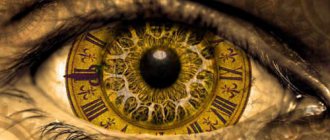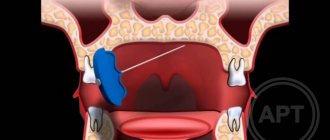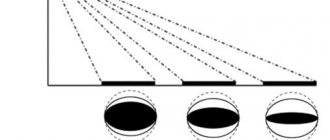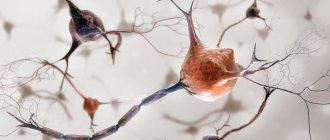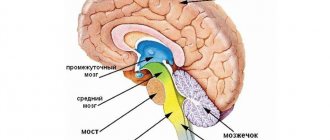Many people do not regard involuntary muscle twitching as a nervous tic and believe that it will go away on its own. It is almost impossible to find information on the Internet that would systematize all the symptoms and at the same time describe the characteristics of a nervous tic or spasms of individual parts of the body.
In our article you can find information about twitching of various parts of the body, their causes and the symptoms of diseases that can cause such phenomena, as well as familiarize yourself with treatment methods.
If you have muscle twitching throughout your body or in certain parts of your body, you should definitely consult a doctor. He will be able to determine whether it is a nervous tic or a seizure. Considering that all human movements must be conscious and coordinated, a nervous tic not only brings discomfort to the perception of one’s body, but can also signal mental, vegetative-vascular and immune diseases. It is worth considering that self-medication will not always be effective, and will often cause irreparable harm; you should consult a doctor. Let's look at individual types of nervous tics and hyperkinesis of various parts of the body in more detail.
Nervous tic
A nervous tic is a muscle contraction that is arrhythmic and involuntary. It can be temporary or permanent. The temporary effect can be caused by strong feelings, fear or a pinched nerve. And a permanent tic is formed due to a lack of microelements after illnesses. Types of nervous tics and hyperkinesis: - Grinding of teeth. - Twitching of the wings of the nose. - Brief twitching of the muscles of the limbs. - Shaking head. — Nervous tic from hyperkinesis in sleep.
Ticks are also divided depending on their location: - Local tics manifest themselves in the contraction of one muscle group. - A generalized tic combines the simultaneous contraction of several groups at once, and at the same time they begin and stop simultaneously.
Types of hyperkinesis
There are various criteria that are used to classify pathology. Thanks to them, the following types of hyperkinesis can be distinguished:
- childhood forms - hyperkinesis up to one year, in the age category from one to five, during puberty;
- by type of occurrence - spontaneous, reflex (reaction to external phenomena), actional (provoked by a certain condition), induced (can be controlled by the patient);
- along the flow – constant (tremors) and episodic (tics);
- by speed of movement - fast and slow;
- by localization - hyperkinesis of the face, limbs, tongue;
- by origin - a distinction is made between primary (congenital) and secondary hyperkinesis acquired as a result of injury or taking medications.
Hyperkinesis in cerebral palsy in children begins to appear at the age of 1.5-2 years. Children with this pathology have difficulty coordinating their movements, which often look like pushing, jerking and twisting. Repetitive movements can be fast and rhythmic or, conversely, slow and erratic.
Hyperkinesis in cerebral palsy may be accompanied by swallowing disorders, speech delays and disorders, and lability of the emotional system.
Consequences of muscle twitching
The causes of nervous tics can be:
- lack of vitamins and microelements such as potassium or iron;
- head injury;
- prolonged emotional and mental stress;
- strong feelings;
- pinched nerve;
- neuralgia or vegetative-vascular dystonia.
Consequences that can result from lack of treatment for nervous tics:
- pinched nerves and increased muscle tension;
- if the cause of a nervous tic is vegetative-vascular dystonia, then the result may be a circulatory disorder;
- a nervous tic caused by excessive physical exertion can lead to convulsions or partial loss of limb mobility.
Classification of startles when falling asleep in adults
Most often, myoclonus occurs for the simplest reasons. For example, after severe physical fatigue. That is, it is not a symptom of a serious illness. Night cramps, or myoclonus, are divided into several types based on the source of localization in the nervous system:
- Stem. They occur when nerve receptors are overexcited.
- Cortical. They are provoked by an external stimulus - sudden noise, bright light.
- Spinal. This type is most often a consequence of inflammatory diseases, heart attacks, tumors, and injuries.
- Peripheral. Consequence of damage to elements of the peripheral nervous system.
Why does involuntary twitching of the muscles of the arms and legs occur?
Considering that the muscles of these parts of the body are most involved in everyday life, their twitching can be caused not only by psycho-emotional, but also by strong physical stress. For example, after a long workout with weights, a phenomenon such as twitching of the muscles of the arms and legs may be observed. As a rule, such phenomena go away on their own within a few days. However, if the twitching continues for a long time, you should definitely consult a doctor, first of all, a therapist, who will determine the need to consult a neurologist, psychologist or neurosurgeon.
How to get rid of myoclonic spasms
In the absence of neurological diseases, the recommendations are simple. Significant physical activity should be completed 3-4 hours before bedtime. Stress should be avoided whenever possible. If you still feel nervous during the day, it is better to take a light sedative in advance.
It is better to take your last meal at least 2 hours before going to bed. The place to sleep should be comfortable. If necessary, it is worth replacing the pillow or mattress or even rearranging the bed for a comfortable night's sleep.
Why does the shoulder muscle twitch?
Spontaneous twitching of the muscles of the shoulder joint can be caused by physical activity. This phenomenon is usually observed in athletes or people whose profession is related to loading and unloading. If the twitching is constant, then it may be due to a lack of potassium in the body. In this case, after consulting a doctor, drug treatment, including vitamin therapy, will be prescribed. In addition, twitching of the left shoulder may be associated with heart disease, so if such a symptom occurs, it is recommended to consult a physician or cardiologist.
Why does my nose twitch?
Twitching of the nose and involuntary sniffing are quite often caused by psychological experiences. This type of twitching requires a mandatory visit to a neurologist. If such a tic is one-time in nature, it would be advisable to take sedatives and perform calming breathing exercises. Facial massage will also help eliminate nervous tics if they are associated with overstrain of facial muscles.
Why does my head twitch involuntarily?
Head tremors can be caused by various serious diseases:
- multiple sclerosis;
- neuralgia;
- cerebellar disease;
— abuse of alcohol and drugs;
- severe stress;
- side effects from taking various medications.
Such twitchings are divided into benign and malignant.
Benign ones, as a rule, are not associated with any serious diseases and do not cause serious discomfort to the patient. As a rule, this type of tremor occurs in adolescence due to insufficient functioning of the thyroid gland.
Diagnosis of causes:
- special studies of head tremor;
— electromagnetic radiation from the brain;
- Tomography and MRI of the brain.
Why do spontaneous leg tremors occur during sleep?
As you know, brain activity does not stop during sleep. Spontaneous muscle twitching during sleep even received a scientific name - Simmonds' nocturnal myoclonus. Such shudders do not pose any danger to human health; they are directly related to brain activity during sleep. If involuntary shaking of the legs leads to awakening, then we may be talking about Okbom's restless legs syndrome. The main reason why these syndromes arise is neuroses and improper functioning of the subcortical part of the brain. In order to determine what causes such twitching, it is necessary to study the functioning of the blood vessels, as well as the psychological state of the patient. After identifying the cause, we can talk about prescribing treatment. This may include:
- taking sedative and epileptic drugs;
- rest and lack of psychological stress may be indicated;
- massage and muscle relaxation;
- following a diet and taking vitamins.
Factors that cause myoclonus attacks
In the presence of certain diseases of the body, the causes of myoclonic spasms when falling asleep or during sleep can be:
- Diffuse processes in the gray matter of the brain caused by a whole list of pathologies.
- Neurological diseases of various etiologies.
- Brain hypoxia, or oxygen starvation.
- Uremia. If the normal functioning of the kidneys is disrupted, the body is poisoned by the products of protein metabolism.
- Hyperosmolar coma.
Simpler causes of myoclonus in adults include:
- Excessive physical activity, especially close to bedtime.
- Stress, anxiety, prolonged nervous tension.
- Drinking coffee or energy drinks.
- Nutrient deficiency.
- Tobacco smoking.
Also, attacks of myoclonus occur due to taking certain medications.
What to do if muscles twitch on their own
If this problem occurs, first of all, it is worth analyzing the previous few days, if such twitching is of a one-time nature. If a few days before the onset of such a symptom there was severe stress, nervous tension, or a psycho-emotional state, then you need to rest well, do breathing exercises, and such twitching will disappear on its own.
If there are chronic diseases, such twitching may be associated with their exacerbations or the general course of the disease. In this case, it is necessary to contact, first of all, a therapist, who will identify a specialist who is competent to answer the question of why twitching occurs and how to eliminate it.
After consulting a therapist, the cause of twitching can be determined as vitamin deficiency, namely, insufficient levels of potassium and iron in the blood. In this case, the most effective treatment will be vitamin therapy and taking special medications.
If there is a constant or prolonged twitching of a muscle, you should definitely examine the vascular system: do an electro- or tomographic study of the brain, which will give answers to the questions: what is it - a pinched nerve or insufficient blood circulation to the brain, which in turn can cause involuntary twitching muscles of various parts of the body.
If twitching of the muscles of the arms and legs occurs after prolonged strength exercises, first of all, you need to eliminate physical activity and give the muscles a rest. Twitching of this type, as a rule, goes away on its own within a few days and does not recur.
Treatment
Conservative therapy
Treatment of diseases accompanied by tremor at rest includes medicinal and non-medicinal measures. The goal of non-drug methods is to improve social adaptation and increase self-care abilities. The drug component of therapy is aimed at reducing the severity of tremors and eliminating the causes of the symptom in secondary parkinsonian manifestations.
In the early stages of Parkinson's disease, dopamine receptor agonists, MAO inhibitors, and amantadine are used. Monotherapy is possible, but the use of multiple drugs is considered the preferred option. As symptoms progress, levodopa is included in the treatment plan. Prescribing other drugs and combined regimens can delay the start of taking levodopa, and subsequently reduce the required dose of the drug.
For secondary disorders, symptomatic therapy is carried out with the means listed above. The effectiveness of levodopa in such cases is lower than in the primary nature of the disorders. At the same time, pathogenetic measures are carried out. The medications that triggered the onset of drug-induced parkinsonism are discontinued or replaced. Oxygen therapy, vascular or neurometabolic drugs are prescribed. For tumors, chemotherapy and radiation therapy are used.

